With an abundance of data enrichment tools available, selecting the right ones can be a game-changer for your business intelligence strategy. Imagine having access to tools that not only enrich your customer data but also provide predictive analytics and data visualization capabilities to drive informed decision-making. These tools offer a comprehensive suite of features to enhance your data analysis processes and elevate your business insights to new heights. But which tools stand out among the rest? The answer lies in exploring the top 10 data enrichment tools that can revolutionize your business intelligence approach.
CRM Integration
When it comes to enhancing your business intelligence capabilities, integrating customer relationship management (CRM) data is crucial for gaining valuable insights. CRM customization allows for tailoring the system to your specific business needs, ensuring that the data collected is relevant and actionable. This customization not only improves the quality of data but also streamlines processes, leading to more efficient operations.
However, integrating CRM data into your business intelligence system can present challenges. Ensuring seamless integration and compatibility between different platforms is essential for maximizing the benefits of CRM data enrichment. Without proper integration, valuable insights may be lost or distorted, impacting decision-making processes.
The benefits of CRM data enrichment are significant. By combining customer data from various touchpoints, businesses can create a more comprehensive view of their customers. This holistic view enables better customer segmentation, personalized marketing strategies, and improved customer service. Ultimately, integrating CRM data into your business intelligence system is a powerful way to drive growth and success.
Customer Segmentation
Integrating CRM data into your business intelligence system opens up opportunities for in-depth analysis and strategic decision-making, with customer segmentation playing a pivotal role in maximizing these benefits. Customer segmentation involves categorizing your customer base into distinct groups based on characteristics such as demographics, behavior, and preferences. By segmenting your customers effectively, you can tailor your marketing strategies to suit each group’s specific needs, leading to more targeted marketing efforts.
Through customer segmentation, you can create personalized recommendations for each segment, enhancing the customer experience and driving engagement. This approach allows you to deliver relevant content, products, and services to different customer groups, increasing the likelihood of conversion and retention. By understanding the unique characteristics and preferences of each segment, you can optimize your marketing campaigns, improve customer satisfaction, and ultimately boost your bottom line. Customer segmentation is a powerful tool that can help you unlock new opportunities for growth and success in today’s competitive business landscape.
Predictive Analytics
Predictive analytics is a powerful tool that allows you to forecast future trends based on historical data patterns. By leveraging predictive analytics, you can enhance your decision-making processes by gaining insights into potential outcomes before they occur. This capability enables you to improve strategic planning by making informed choices that align with the anticipated future scenarios.
Forecasting Future Trends
Enhancing business intelligence through data enrichment tools involves delving into the realm of predictive analytics to forecast future trends. Predictive analytics empowers businesses to anticipate market shifts and industry developments, providing a competitive edge in decision-making processes.
- Utilizing Historical Data: By analyzing past trends and patterns, predictive analytics can identify correlations and patterns that help forecast future trends. This historical data provides valuable insights into consumer behavior and market dynamics.
- Machine Learning Algorithms: Leveraging advanced algorithms, predictive analytics can process vast amounts of data to identify trends that may not be immediately apparent to human analysts. This enables businesses to make more accurate predictions based on complex data sets.
- Scenario Modeling: Predictive analytics allows businesses to create various scenarios based on different assumptions and variables. By simulating these scenarios, organizations can evaluate potential outcomes and prepare strategies to adapt to different future trends.
Enhancing Decision-Making Processes
To optimize decision-making processes, businesses leverage predictive analytics as a strategic tool to extract actionable insights from data. Predictive analytics utilizes historical data, statistical algorithms, and machine learning techniques to identify patterns and trends, enabling organizations to make informed decisions based on future outcomes.
Data quality plays a crucial role in the effectiveness of predictive analytics. Reliable data inputs lead to more accurate predictions and reliable insights. It is essential to ensure that the data being used is clean, up-to-date, and relevant to the decision-making process. Poor data quality can lead to erroneous conclusions and hinder the decision-making process.
Information reliability is another critical aspect when enhancing decision-making processes through predictive analytics. Businesses must trust the information provided by the predictive models to make informed decisions confidently. Ensuring the reliability of the information involves validating the accuracy of the predictions and continuously monitoring and updating the models to reflect any changes in the data. By focusing on data quality and information reliability, businesses can enhance their decision-making processes and drive better outcomes.
Improving Strategic Planning
For effective strategic planning, businesses rely on the power of predictive analytics to anticipate future trends and make informed decisions. Predictive analytics can significantly enhance strategic planning processes by providing valuable insights that drive growth and success. Here are three key ways predictive analytics improves strategic planning:
- Strategic alignment: Predictive analytics helps businesses align their strategies with market demands and internal capabilities. By analyzing past data and trends, organizations can adjust their strategic plans to ensure they are in sync with current market conditions.
- Competitive analysis: Utilizing predictive analytics enables businesses to conduct in-depth competitive analysis. By forecasting competitor behavior and market trends, companies can develop proactive strategies to stay ahead in the competitive landscape.
- Growth opportunities: Predictive analytics uncovers growth opportunities by identifying emerging trends, customer preferences, and market gaps. This information allows businesses to capitalize on new opportunities and optimize their strategic planning for future growth.
Data Visualization
Data visualization plays a crucial role in transforming raw data into meaningful insights for businesses. By utilizing data visualization techniques, businesses can effectively present complex information in a visual format that is easy to understand and interpret. Interactive dashboards are particularly valuable in this process, allowing users to interact with the data and explore different scenarios for deeper data interpretation.
Through data visualization, businesses can quickly identify trends, patterns, and outliers that may not be apparent when looking at raw data alone. This visual representation of data enables stakeholders to make informed decisions based on a clear understanding of the information presented. By using interactive dashboards, users can customize their views, drill down into specific data points, and gain real-time insights into their operations.
Real-Time Data Enrichment
Real-time data enrichment offers you the advantage of instant data updates, allowing for dynamic information enhancement as changes occur. By harnessing real-time data enrichment tools, you can ensure that your business intelligence is always up-to-date and accurate, enabling quicker and more informed decision-making processes. This capability can provide a competitive edge by enabling you to respond rapidly to market shifts and emerging trends.
Instant Data Updates
Enhancing your business intelligence capabilities with instant data updates through real-time data enrichment can significantly impact your decision-making processes. When considering tools for instant data updates, several key features can optimize your business operations:
- Automated Updates: Implementing tools that provide automated updates ensures that your data is always current, reducing the risk of working with outdated information and enabling faster decision-making processes.
- Streamlining Processes: Instant data updates streamline your data enrichment practices, allowing for a more efficient and effective workflow. By automatically updating information in real-time, you can save valuable time and resources that would otherwise be spent manually updating datasets.
- Enhanced Business Efficiency: Real-time data enrichment not only keeps your data current but also enhances overall business efficiency. By ensuring that your data is up-to-date at all times, you can make more informed decisions, improve operational efficiency, and stay ahead of the competition.
Dynamic Information Enhancement
Amidst the ever-evolving landscape of business intelligence, the realm of dynamic information enhancement stands as a pivotal domain for organizations seeking to fortify their decision-making prowess. Dynamic information enhancement, also known as real-time data enrichment, plays a crucial role in ensuring data quality and enriching the information available for analysis and decision-making processes.
By continuously updating and enriching data in real-time, organizations can access the most current and relevant information to make informed decisions promptly. This capability not only enhances the accuracy and completeness of data but also enables businesses to respond swiftly to changing market conditions and customer preferences.
Dynamic information enhancement tools monitor data streams, identify patterns, and update information instantaneously, ensuring that decision-makers have access to up-to-date insights. By integrating real-time data enrichment into their business intelligence systems, organizations can improve the quality of their data, enhance their analytical capabilities, and gain a competitive edge in today’s fast-paced business environment.
Machine Learning Algorithms
When delving into the realm of Machine Learning Algorithms within the context of data enrichment tools for business intelligence, one encounters a landscape rich with potential for transforming raw data into valuable insights. Machine learning algorithms play a crucial role in processing vast amounts of data and extracting meaningful patterns that can drive informed decision-making. Here are three key aspects to consider:
- Algorithm Optimization: Machine learning algorithms can be fine-tuned and optimized to enhance their performance in tasks such as data classification. By continuously refining these algorithms, businesses can improve the accuracy and efficiency of their data enrichment processes.
- Anomaly Detection: Machine learning algorithms excel at anomaly detection, identifying outliers or irregularities in datasets that may indicate potential issues or opportunities. This capability is essential for maintaining data integrity and uncovering hidden insights.
- Pattern Recognition: Machine learning algorithms are adept at recognizing complex patterns within data, enabling businesses to uncover trends, correlations, and predictive relationships that would be challenging to identify manually.
Harnessing the power of machine learning algorithms can significantly enhance the effectiveness of data enrichment tools in driving business intelligence initiatives.
Data Cleansing Tools
Within the realm of data enrichment tools for business intelligence, the pivotal role of Data Cleansing Tools cannot be overstated. Automated data cleaning is a fundamental function of these tools, enabling organizations to efficiently detect and rectify inaccuracies and inconsistencies within their datasets. By automating this process, Data Cleansing Tools save valuable time and resources, ensuring that data remains accurate and reliable for analysis.
Moreover, Data Cleansing Tools play a crucial role in maintaining data quality assurance. They help in identifying and correcting errors, duplicates, and incomplete data entries, ultimately enhancing the overall quality of the dataset. This aspect is vital for businesses as it ensures that decision-making processes are based on reliable and trustworthy information.
Data Mapping
Data Mapping is a critical process in the realm of data enrichment tools for business intelligence. It involves linking data from one source to another, ensuring that information is accurately transferred and interpreted. Here are three key aspects to consider when delving into data mapping:
- Data Transformation: Data mapping facilitates the conversion of data from one format to another, allowing for seamless integration and analysis across various systems and platforms.
- Data Harmonization: Through data mapping, disparate data sets can be aligned and standardized to ensure consistency and coherence, enabling better decision-making processes based on unified information.
- Data Normalization: Data mapping aids in normalizing data by structuring it uniformly, eliminating redundancy, and enhancing data quality for improved analytics and reporting capabilities.
Multi-Source Data Integration
In the realm of data enrichment tools for business intelligence, transitioning from data mapping to multi-source data integration marks a shift towards a more comprehensive approach to data utilization. Multi-source data integration involves combining data from various sources, such as databases, applications, and external datasets, to provide a more holistic view of information for analysis and decision-making. Data enrichment platforms play a crucial role in this process by facilitating the integration of diverse data sets seamlessly.
One key aspect of multi-source data integration is ensuring data quality assurance throughout the process. Data quality assurance involves activities such as data cleansing, standardization, and enrichment to enhance the accuracy, consistency, and completeness of the integrated data. By leveraging data enrichment platforms, organizations can streamline the integration of data from multiple sources while maintaining high standards of data quality assurance.
Incorporating multi-source data integration into business intelligence strategies enables organizations to unlock valuable insights and make informed decisions based on a more comprehensive and enriched data foundation.
Data Validation
When it comes to data validation, ensuring the accuracy of your data is paramount. Validating data sources to confirm their reliability is crucial for making informed business decisions. The importance of verification cannot be overstated in maintaining the integrity and trustworthiness of your data.
Accuracy in Data
With the increasing volume and complexity of data being processed in today’s business landscape, ensuring the accuracy of information is paramount for making informed decisions. Achieving data accuracy involves meticulous validation processes to eliminate errors and inconsistencies. Here are three key aspects to consider when focusing on accuracy in data:
- Data Cleansing: Utilize data enrichment techniques to clean and standardize data, removing duplicates, correcting errors, and ensuring uniformity. Cleaning data enhances its quality and accuracy for improved decision-making processes.
- Cross-Referencing Data: Validate data by cross-referencing it with multiple sources to identify discrepancies and inaccuracies. This process ensures that the information is consistent and reliable, enhancing the overall accuracy of the data.
- Regular Auditing: Implement regular audits to validate and verify the accuracy of data continuously. By conducting routine checks and validations, you can maintain data integrity and ensure that decisions are based on accurate and up-to-date information.
Validating Data Sources
Ensuring the reliability and accuracy of data sources is a critical aspect of data validation in the realm of business intelligence. Data integrity is key to making informed decisions, and this begins with validating the sources from which data is collected. Source verification involves confirming that the data comes from reputable and trustworthy origins, safeguarding against errors or manipulation that could compromise the integrity of the information. By rigorously validating data sources, businesses can have confidence in the quality of the data they rely on for their analytical processes.
Source verification is essential for maintaining the credibility of insights derived from business intelligence tools. Without this crucial step, there is a risk of basing decisions on inaccurate or outdated information, leading to poor strategic choices. By prioritizing data validation and ensuring the integrity of data sources, organizations can enhance the effectiveness of their business intelligence efforts and drive better outcomes.
Importance of Verification
Validating data sources is a foundational pillar of data integrity within the realm of business intelligence. Ensuring the accuracy and reliability of the data being used is crucial for making informed business decisions and driving successful outcomes. Here are three key aspects highlighting the importance of verification in data validation:
- Verification Techniques: Employing advanced verification techniques such as data profiling, data cleansing, and data matching helps in identifying and rectifying discrepancies or inconsistencies within the dataset, thereby enhancing data quality and reliability.
- Trustworthiness Assessment: Conducting a thorough trustworthiness assessment of data sources involves evaluating the credibility, origin, and accuracy of the data to determine its reliability for decision-making processes, ultimately safeguarding data integrity.
- Data Quality: Verification plays a pivotal role in maintaining high data quality standards by ensuring that the information is accurate, complete, and consistent, leading to improved overall data integrity and better business intelligence outcomes.
Frequently Asked Questions
How Can Data Enrichment Tools Improve Customer Retention Rates?
To boost customer retention rates, data enrichment tools act like a skilled tailor, segmenting customers based on behavior and demographics. This personalized marketing approach tailors interactions, enhancing relevance and fostering loyalty, ultimately leading to improved retention rates.
What Security Measures Are in Place for Multi-Source Data Integration?
To ensure secure multi-source data integration, data encryption is crucial for protecting sensitive information. Access controls play a vital role in limiting who can view or manipulate the integrated data, adding layers of security to prevent unauthorized access.
Can Data Validation Tools Identify and Correct Data Entry Errors?
Data accuracy is crucial for business success. Validation tools play a key role in identifying errors and ensuring correct data entry. They detect inaccuracies and offer correction methods, ultimately enhancing the reliability of your business intelligence.
How Do Machine Learning Algorithms Enhance Data Enrichment Processes?
Machine learning algorithms improve data enrichment by leveraging predictive analytics for customer segmentation. Natural language processing and sentiment analysis enhance understanding of text-based data, enabling targeted insights. These tools refine data quality and drive informed decision-making in business intelligence processes.
Are There Limitations to Real-Time Data Enrichment Capabilities?
When considering real-time limitations, data accuracy is crucial. Ensure systems can handle rapid updates without sacrificing precision. Regularly assess the trade-off between speed and correctness to optimize your data enrichment processes effectively.




